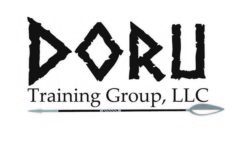Last time I posted about 2 top takeaways I observed from the students at the FoF course. There was a 3rd standout observation, but it didn’t fit with the other two and I didn’t want it to distract from those.
The 3rd takeaway was to make good use of force decisions. A lot of students (male) ended up drawing their gun on a belligerent, but unarmed, female. While there could be an occasion where a male could reasonably be in fear for their life against an unarmed female, you need to be able to state exactly why, and why some other alternative (like retreating) would put you in more danger. Also, on more than a few occasions, role players got shot who were not presenting a deadly fore threat at the time as well as more “brandishing” incidents in general (drawing the gun before it was a clear deadly force incident).
This happened for multiple reasons. The first is a training environment issue. The students assumed that since they have a “Simmunitions” gun in a FoF scenario, that means they are supposed to shoot. Going along with that, they want to use the gun because that is what they are paying for.
However, probably one of the biggest disservices an instructor could make would be to condition the students into only one response, that deadly force is always (and the only) option based on poor scenario design.
Another reason has to do with not treating the scenarios as real. At one point I asked why the student pointed the gun at a role player. “Because they got too close to me” was the response. I then asked if they drew their gun out in public every time someone gets to close to them like at the mall etc. “No….” I also own some of this, I will better explain the environment and conditions for future classes to make it clear how they should look at the scenarios.
Finally, just plain ‘ol stress. The drill where these issues came out the most was a decision making drill with 3 role players all doing different things at once (some threatening, some just annoying, some no threat at all). This forces the student to take in a lot of info and make decisions. It is supposed to be stressful. Under stress (and the expectation that things might get violent), our subconscious reaches for safety, in the form of the gun if we have one. Under stress we tend to have our hands go to the gun and our fingers get drawn to the trigger prematurely as if by a tractor beam whether we want it to consciously at that point.
Finally, a mirror-image problem of to being too quick to draw or shoot (when deadly force isn’t warranted yet) is a hesitation to shoot when it is. I noticed this the most when the role-player had an impact weapon or a knife (safe training versions of course!). Students giving them way too much leeway and letting them get way too close after they indicated they meant to harm the student and made a movement forward. Once you see they have a deadly weapon and they make an aggressive move, don’t hesitate!
How can you apply it in your training? Use photo-realistic or 3D targets that have guns or knives so you are conditioning yourself to only use deadly force when legal to do so. Also, have a partner work in no-shoot targets for you to practice rapid observation and decision making. Practice giving verbal commands and retreating on occasion instead of always shooting every target every time in training.

